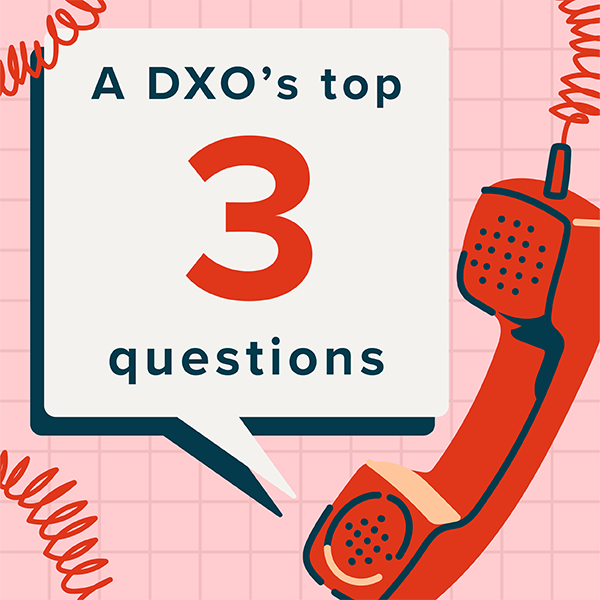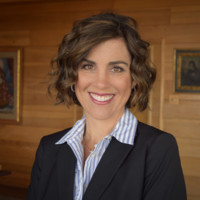Dianna Finocchiaro Gallagher is one of the founding fundraisers at Santa Clara University’s Donor Experience Program. In her first four months as a digital-first gift officer, Dianna has already had 1:1 contact with over 300 alums. That’s more prospects than most major gift officers connect with in a year.
Dianna has great insights to share on this “crash course in fundraising.” And in reflecting on some success stories from her first few months of outreach, there is one theme that stands out:
High-volume outreach through the Donor Experience Program uncovers a lot of planned gifts. Like, a lot.
We hear this theme from Donor Experience programs at our other DX partner institutions, too. Donor Experience Officers around the country are unearthing planned gifts left and right. Here are some DXO planned gift wins from the past few weeks. (You can find a live feed of more #dxowins wins here.)
It makes sense that outreach through Donor Experience programs results in so many planned gifts. DXOs have multiple touchpoints with thousands of donors who give loyally but have never gotten 1:1 outreach from their alma maters. They get alums on the phone and they ask the right questions.
Stealable: Dianna's top three questions to uncover planned gifts:
- Decades from now, what would you like to see change or grow at Santa Clara?
- Do you know about the impact that a planned gift can have at Santa Clara?
- Have you considered adding Santa Clara to your estate plans?
Here are a few takeaways from Dianna’s early donor outreach that resulted in a number of new planned gifts.
Tip #1: Target the right people.
At EverTrue, we are big proponents of combining data insights with good ole common sense. Consider, for example, that these data points may point to alums’ planned giving potential:
Alums who are recently retired may now be evaluating their long-term investments. Alums who give consistently every year may already have their alma mater in their estate plans. Alums who work as lawyers or financial planners may already be savvy about planned gifts.
With these data points in mind, Dianna reached out to an alum in her portfolio who had been giving $1k/year loyally for 50 years and had never been contacted by a gift officer. (The 1,000 alums in her portfolio are high-potential, previously-overlooked alums and are intentionally selected by EverTrue’s data team.)
This donor ignored Dianna’s first email. He ignored her first phone call. But he answered her next email attempt. His response read, “Dianna, in the 50 years that I’ve been giving to Santa Clara, no one has reached out to me. I don’t have the capacity to make a big gift, but I’m open to having a call.”
Diana and this loyal donor had an amazing first conversation. The donor had a deep emotional connection to Santa Clara, including treasured memories playing on the winningest baseball team in SCU history (and being featured in their Hall of Fame). He explained that he had recently retired and didn’t see himself making a significant gift to Santa Clara, but that he was grateful for the connection.
After the call, Dianna Googled the donor and found an article citing his SCU baseball days in a game against the San Francisco Giants. She sent it to him. He had never seen the article before, and he loved it. His response included a request for information about endowing a scholarship at Santa Clara.
Through the tools in the Donor Experience tech suite, Dianna can see that the donor frequently re-opens the email she sent him that contains the baseball article. Dianna will continue to steward this loyal donor and his deep love for Santa Clara — and expects that a significant gift may be in his future.
Tip #2: Call the right people.
One thing we’ve learned from our Donor Experience programs is that phone calls work. In fact, we’ve found that sending an email and following up with a phone call on the same day results in 2.6x more donor meetings. (We call this the 1-2 punch.)
Through her early outreach in the Donor Experience program, Dianna emailed a previously unresponsive alumna and then followed up with a phone call. The alumna answered. In their first conversation, the alumna revealed that she was 75 years old. Dianna asked if she had considered making a planned gift to Santa Clara, and the alumna explained that Santa Clara was already in her estate plans.
The conversation with this previously-unresponsive alumna has since progressed. Dianna looped in a colleague in major gifts at Santa Clara Law School, and they are in active discussions with the alumna about a 6-figure gift to establish an endowed scholarship at the Law School, and they are documenting her $40,000 planned gift.
By partnering with a school-based Major Gift Officer, Dianna is learning the intricacies of endowed gifts, annual interest payouts, multi-year pledges, and planned gift documentation. (Crash course in fundraising!)
Tip #3: If you don't ask, you don't know. So - ask.
Dianna is constantly sharing campus content and news with the alums in her 1,000-person portfolio as part of her cadence outreach through Santa Clara’s Donor Experience program. So, when Santa Clara hired a new president in March, Dianna sent the news as a check-in touchpoint to most of the folks in her portfolio.
Hot take: Cadence outreach works. We took some tried-and-true tips from rockstar DXOs and made a Donor Experience Starter Kit for you to test out a cadence on a group of your best 25 prospects.
In her outreach, Dianna always includes a calendar link in her email signature to allow alums easily schedule a meeting with her without a bunch of back-and-forth. After receiving Dianna’s news about SCU’s new president, a previously-unresponsive donor booked a meeting.
In their first chat, Dianna learned that the alumna was a retired financial advisor. Given the alumna’s successful career, well-deserved retirement, and financial planning experience, Dianna asked if she had considered adding Santa Clara to her estate plans. The alumna admitted that she hadn’t considered this, but that she was currently in the process of rewriting her estate plans and would consider endowing a scholarship through her estate.
Timing is everything.
Dianna is now partnering with a Planned Giving Officer to talk with this donor about gift amounts, designations, and documentation for an endowed scholarship through her estate. If Dianna hadn’t specifically asked about the alumna’s planned gift intentions, she likely would have missed the opportunity to be a part of her estate revision process.
Tip #4: “Not now” doesn’t mean “no.”
In terms of cash flow, flexibility, and short-term commitment, planned gifts have a very different effect on donors than a major gift made during a donor’s lifetime. But ultimately, planned gifts have the same effect on the long-term health of the institution.
Through EverTrue, Dianna noticed that a donor had missed her last pledge payment a number of years ago, and the pledge was written off. Dianna reached out to the donor to thank her for making a pledge in the past and to ask if she would consider making a new, larger pledge.
The alumna explained that personal and professional circumstances would keep her from committing to a new gift at this time. But, she mentioned that SCU is included in her estate plans, and that she was willing to document the planned gift.
By pivoting the gift conversation from current pledge to planned gift, Dianna helped the donor rethink the timeframe of her impact at SCU. And now the alumna will receive a warm welcome back to the SCU donor family as she is stewarded for her documented planned gift.
Wins, all-around.
Uncovering planned gifts through 1:1 outreach with thousands of previously-overlooked alums is a win for new Donor Experience fundraisers, it’s a win for the university, and it’s a win for the donors who will now get the stewardship they deserve.
Follow Dianna’s lessons from her first few months of a “crash course in fundraising” to discover more planned gifts at your institution:
- Use giving patterns, career events like retirements, and donations to other institutions to inform your planned giving asks.
- Lean into phone calls.
- Ask alums if they have already listed your institution in their estate plans.
- And remember that you’re always planting seeds — even if the fruits come much later.
Want to learn more? Subscribe to the RAISE blog to see more posts like this. Or book an EverTrue demo with our team.


